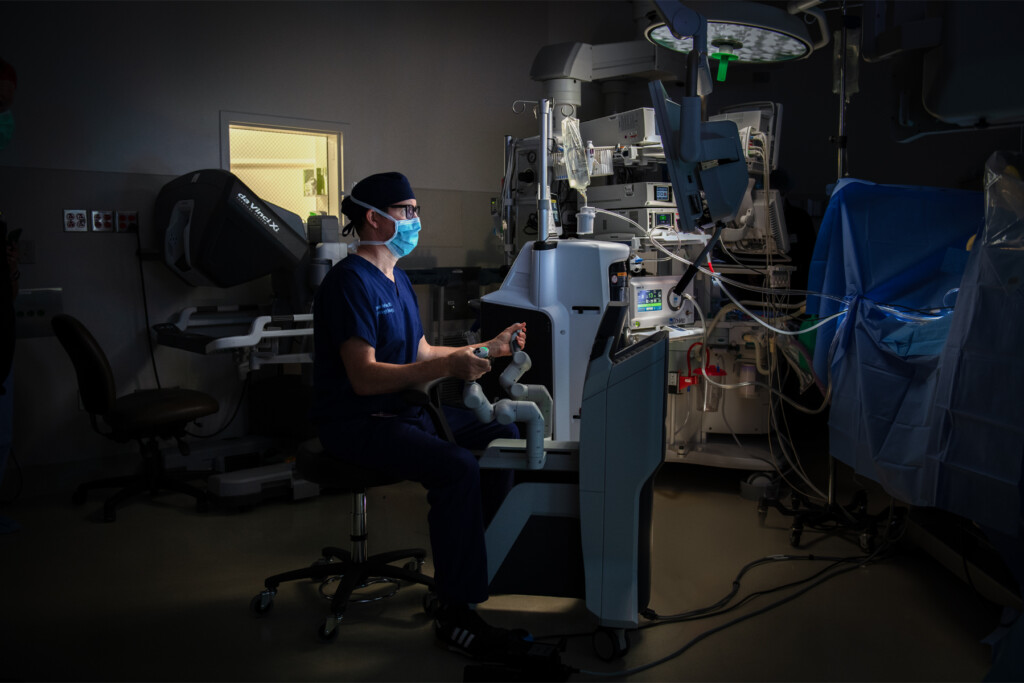Being a woman is the greatest. We get to wear sunhats in tulip fields. We get to ride wicker-basketed bikes on sandy beaches. (“Look! No hands! Ha-ha-ha-ha!”) If we get paid equally to our male counterparts, we get to be super surprised. (Are you kidding? You know we love surprises.) And our reproductive organs only wreak havoc on our entire physical and emotional systems all the time, guaranteed. The only thing better than being a woman is being a woman in Texas!
If you haven’t struggled with getting pregnant, had a full baby ripped through your six-pack, or spent your entire adult life explaining why you don’t want to have children, you’ve gotta try this. There’s truly nothing better than being a woman.
Then there’s the moment we hear that we are going to need a hysterectomy. A life-bomb goes off, followed by psychic shrapnel. Frustration, pain, grief, sorrow, fear. Maybe you’re suffering from incredible pain from endometriosis or fibroids. You’ve tried everything, and you’re told that, for your health, your uterus needs to be removed. Perhaps they tell you they’ll also need to remove your cervix, fallopian tubes, and ovaries. You will not be able to bear children. It’s all very final.
No matter the reason for this surgery, the results will be life-changing. This isn’t like getting a nose job—when you remove these pieces of a person, hormones shift. To say that this process is emotionally complex and sensitive is an understatement. It’s a last resort. And yet, it’s the second-most performed surgery for women, after cesarean section, in the United States.
For something this serious, you want access to the best surgeon and the newest technology. Now, right here in North Texas, you’ve got access to both.
Dr. Thomas Heffernan, gynecologic oncologist at Medical City Plano, is a huge proponent of minimally invasive gynecological surgeries. “Innovating has always been part of my drive,” he says. “I was lucky enough to be starting my career before robotics had been adopted in the community. And so I was able to be really kind of instrumental in getting robotic surgery established in the Dallas-Fort Worth market.”
Heffernan’s robotic surgery résumé is filled with firsts: he was the first surgeon to perform robotic-assisted surgery at Medical City Dallas, Presbyterian Plano, and Medical City Frisco, and he has completed thousands of cases since then. He’s trained hundreds of surgeons in the area and nationwide. Many of those firsts were assisted by the da Vinci Surgical System, a robot that uses a minimally invasive surgical approach.
“It approaches surgery in a way very similar to laparoscopic surgeries,” Heffernan explains. “But the da Vinci robot gives us a great deal more dexterity.”
That dexterity is not cheap. The da Vinci robot costs about $1.6 million and weighs 2,000 pounds. “You have to dedicate a whole operating room to it,” Heffernan says. That’s too big and too expensive for many smaller hospitals.
Enter Momentis Surgical, founded in 2013 in Tel Aviv. Dvir Cohen, the company’s CEO and co-founder, was working with the Israeli Ministry of Defense on a robotic system that mimics humans’ natural movements. Cohen saw the potential of this tech and created a new use for it: a product that performs the same minimally invasive gynecological procedure as the da Vinci system, only at a fraction of the size and cost for hospitals.
Obviously, they got in touch with Heffernan.
“They said, ‘We’re developing this new robot. We’re going to make it smaller. We’re going to make it lighter and more portable, and we’re going to make it more affordable.’ ”
The result, Momentis’ Anovo Surgical System, is all of those things. It costs $500,000 and weighs about 13 pounds. “You can move it from room to room,” Heffernan says. “It doesn’t require this enormous amount of dedicated equipment, and the price point is much better. So it should ultimately, in time, allow us to get minimally invasive surgery into smaller communities and smaller hospitals.”
Heffernan jumped at the chance to try out the new system, and Medical City Plano has become the first medical facility in Texas to adopt it for use in transvaginal benign gynecological procedures, including benign hysterectomies. Momentis was just as excited to work with Heffernan.
“The key is that you partner with the right physicians,” says Chad Zaring, chief commercial officer at Momentis. “And what do the right physicians look like? They’re like Dr. Heffernan. They have extremely good reputations with their staff, with their patients. Secondarily, their skill in robotics—they’re skilled in laparoscopy, they’re skilled in minimally invasive surgery. Dr. Heffernan is every bit of that. You will not find a better physician anywhere.”

The Anovo System is the first and only FDA-authorized surgical robot that features miniature humanoid-shaped arms, with shoulder, elbow, and wrist joints that mimic a surgeon’s precise movements for high agility and dexterity. As Zaring puts it, “Our system, unlike other robots, has the true humanoid portions of a shoulder, elbow, and wrist joint, so it essentially feels like the surgeon’s fully immersed inside the patient.”
OK, this all sounds like it’s going to lead to great outcomes—but, I’m sorry, did y’all just say “shoulder” and “fully immersed” in the same sentence regarding a gynecological surgery? Nobody going in for any surgery wants to hear that anything is going to be shoulder deep. Not one person.
Hearing these physicians geek out about the tech is giving Iron Man’s robot-assistant vibes, and you just know that when nobody’s looking, they’re going to make this robot dance on your uterus.
The animated Anovo promotional video isn’t any less disquieting. Fight-or-flight kicks in when you see this visual depiction of every robot movie villain ever, miniaturized inside a uterus like it’s Dennis Quaid in Innerspace. Think: Neo sending a sentinel to extract your fallopian tubes. A battle droid scrubbing in. Number 5 is alive, and he’s bringing his shoulder, elbow, and clampy hands to this hysterectomy party.
We’ve clearly spent a lot of energy on making the robot smaller and cheaper. Let’s throw some dollars at a bedside manner budget for this thing, yeah?
On the Momentis website, they’ve gone in the complete opposite direction from Dr. Octopus arms. They’ve got images of happy women doing Woman Things. There’s a glee-filled, decidedly unsweaty woman checking her step count after a workout; a woman effortlessly riding a bike on a sandy beach; a woman with a sunhat walking through a field of tulips, like we do.
Did y’all just say “shoulder” and “fully immersed” in the same sentence?
It’s like some dudes asked themselves, “What does a woman do for fun?” And they were like, “FLOWERS AND SUNHAT. GILMORE GIRLS? MAYBE YOGA.”
While it’s easy to get hung up on the marketing, Zaring and Heffernan have exactly the right mindset and mission for this tool: it’s about helping patients have less pain, minimal scarring, and fewer reminders of a hard time in their lives.
“We know cosmetics are not the most important thing patients care about,” Zaring says. “They care about, you know, pain and complications. ‘Am I going to get out of the hospital quickly and get back to see my family?’ But if we can offer all those things and offer them the benefits of cosmetically beneficial procedure, then we think we’re doing really good things for the patient.”
For Heffernan, the patient’s comfort with the process is priority No. 1. “A lot of my job as a whole is reassurance,” he says. “I deal with cancer, and I deal with pre cancer, and I deal with people at very scary moments in their lives. I really like to make sure that they feel comfortable that I know what I’m doing and there’s a way to solve it. And the robotics is just a way of doing it with less trauma so that they’re back to being themselves and ideally forgetting all about me. The sooner they are like that, that means that they’re back to their real life. The fear is gone, the problem is solved, and they can just move on. The robot just helps us get there.”
The Anovo Surgical System will certainly make minimally invasive gynecological surgeries more accessible. Not only can smaller hospitals in rural areas afford to access this technology, but larger hospitals can purchase more systems, making it much easier for more patients to receive the care they deserve.
And the sooner more women get access to the newest technology for these gynecological surgeries, the sooner they can all get back to what’s truly important: walking through a bunch of tulip fields in their sunhats.
This story originally appeared in the April issue of D Magazine with the headline, “Dr. Octopus Comes to North Texas.” Write to [email protected].







